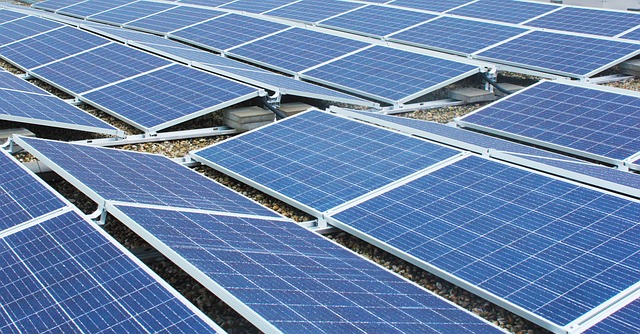Renewable Power: The Key to Combating Climate Change
As the effects of climate change become increasingly evident, the call for sustainable solutions has never been louder. Among these solutions, renewable power emerges as a central pillar in addressing the ever-growing challenges posed by climate change. Transitioning from fossil fuels to renewable energy sources is essential for reducing greenhouse gas emissions, promoting energy security, and fostering a sustainable future. This article delves into the various aspects of renewable energy, its significance in combating climate change, and the pathways to a greener future.
Understanding Climate Change
Climate change refers to significant changes in global temperatures and weather patterns over time. While climate change is a natural phenomenon, human activities, particularly the burning of fossil fuels, have accelerated its pace. The consequences are severe: rising sea levels, extreme weather events, loss of biodiversity, and health risks associated with pollution. The overwhelming scientific consensus is that immediate action is needed to mitigate these changes.
Global Warming and Greenhouse Gas Emissions
At the heart of climate change lies global warming, primarily driven by greenhouse gas emissions such as carbon dioxide (CO2), methane (CH4), and nitrous oxide (N2O). These gases trap heat in the atmosphere, leading to the warming of the planet. The primary culprits of these emissions are energy production from fossil fuels, industrial processes, and deforestation. To combat climate change effectively, a sharp decrease in these emissions is crucial.
The Role of Renewable Energy
Renewable energy sources, including solar, wind, hydroelectric, geothermal, and biomass, provide a viable alternative to fossil fuels. Unlike traditional sources of energy, renewables are abundant, sustainable, and produce minimal harmful emissions. This section explores the different types of renewable energy and their contributions to the global energy landscape.
Solar Energy
Solar energy harnesses sunlight to generate electricity or heat. It is one of the fastest-growing renewable energy sources worldwide, driven by technological advancements in photovoltaic cells and solar thermal technology. Solar power offers numerous benefits, including:
- Abundant availability: The sun emits more energy in one hour than the entire world consumes in a year.
- Scalability: Solar installations can be deployed at various scales, from small residential setups to large utility-scale solar farms.
- Low operational costs: Once installed, solar panels require minimal maintenance and incur low operating costs.
Wind Energy
Wind energy is generated by converting the kinetic energy of wind into electricity using turbines. It is one of the most cost-effective renewable energy sources and has seen significant growth in recent years. The advantages of wind energy include:
- Reducing reliance on fossil fuels: Wind turbines do not produce emissions during operation, making them an environmentally friendly alternative.
- Job creation: The wind energy sector has created thousands of jobs in manufacturing, installation, and maintenance.
- Land use efficiency: Wind farms can coexist with agricultural activities, allowing for dual land use.
Hydropower
Hydropower utilizes the energy of flowing water to generate electricity. It has been a reliable source of energy for centuries and presently contributes to a significant portion of the world’s energy supply. Key benefits of hydropower include:
- Reliable source of energy: Hydropower can provide a continuous and stable energy supply, helping to balance fluctuations in demand.
- Long lifespan: Hydroelectric plants typically have long operational lives and low emissions once built.
- Storage capacity: Pumped storage hydropower can store energy for later use, enhancing grid stability.
Geothermal Energy
Geothermal energy harnesses the heat from the Earth’s core to generate electricity and provide direct heating. While it is location-specific, it is a reliable and consistent energy source with minimal environmental impacts. The advantages are:
- Consistency: Unlike solar and wind, geothermal energy can provide a constant energy output, making it suitable for baseload power generation.
- Small land footprint: Geothermal plants occupy less space compared to other renewable energy sources.
- Low emissions: Geothermal energy has a significantly lower carbon footprint compared to fossil fuels.
Biomass Energy
Biomass energy is produced from organic materials, such as plant and animal waste. This renewable energy source can be converted into electricity, heat, or biofuels. The benefits of biomass include:
- Diverse fuel sources: Biomass can utilize a wide range of organic materials, making it versatile and widely accessible.
- Waste reduction: Utilizing waste materials for energy can help reduce landfills and promote sustainable waste management.
- Carbon neutrality: When managed sustainably, biomass can potentially achieve a net-zero carbon footprint.
Benefits of Transitioning to Renewable Energy
The transition to renewable energy is not only about reducing carbon emissions; it encompasses a broader set of benefits. This section outlines how renewable power can contribute to a sustainable future.
Environmental Impact
The most compelling reason to adopt renewable energy is its positive environmental impact. By minimizing greenhouse gas emissions, renewables can help mitigate the effects of climate change, including extreme weather patterns and habitat destruction. Additionally, renewable energy causes far less air and water pollution compared to fossil fuels, leading to improved public health outcomes.
Energy Security and Independence
Renewable energy sources can enhance energy security by diversifying energy supplies. Countries can reduce their dependence on imported fossil fuels, thus protecting themselves from market fluctuations and geopolitical tensions associated with oil and gas supplies. Investing in domestic renewables allows nations to bolster their energy independence and create a more stable energy landscape.
Economic Growth and Job Creation
The renewable energy sector is a significant driver of economic growth. As investment in renewables increases, so does job creation. From manufacturing solar panels to installing wind turbines, thousands of new jobs are being created worldwide. The renewable energy industry has the potential to provide stable, long-term employment opportunities and stimulate local economies, particularly in rural areas.
Technological Innovation
The renewable energy sector fosters innovation and technological advancement. As companies and researchers work to improve efficiency and reduce costs, new technologies emerge, paving the way for enhanced performance in energy generation and storage. This culture of innovation not only enhances the renewable energy sector but often spills over into other industries, creating a cycle of progressive technological development.
Challenges to the Adoption of Renewable Energy
Despite the myriad benefits associated with renewable energy, several challenges hinder its widespread adoption. This section highlights key obstacles to the transition and examines potential solutions.
Intermittency and Reliability
One of the main challenges of renewable energy sources like solar and wind is their intermittency. Unlike fossil fuels, renewables depend on weather conditions and time of day, leading to fluctuations in energy output. To address this challenge, advancements in energy storage technologies, such as batteries and pumped hydro storage, are essential. Developing a smart grid that can manage energy distribution and demand will also help balance supply and demand fluctuations.
Infrastructure and Investment Costs
Transitioning to a renewable energy system necessitates significant investments in infrastructure. Building wind farms, solar panels, and the accompanying energy storage systems require upfront capital. However, the long-term savings from reduced energy costs and the societal benefits of cleaner air and lower health care costs can justify these initial expenditures. Governments can play a crucial role by implementing incentives, subsidies, and policies that encourage private sector investment in renewable technologies.
Political and Social Resistance
Resistance from various stakeholders, including fossil fuel industries and political groups, poses a challenge to the widespread adoption of renewable energy. Advocacy for renewable energy often necessitates a cultural shift towards sustainability. Education and awareness campaigns are vital for highlighting the benefits of renewables and dispelling myths that hinder acceptance. Moreover, involving local communities in discussions about renewable projects ensures that their voices are heard, leading to greater acceptance and support.
The Way Forward
Combating climate change through the widespread adoption of renewable energy is a critical path towards a sustainable future. However, this transition requires a coordinated effort from governments, businesses, and individuals around the globe.
Policies and Frameworks
Active governmental policies play a crucial role in promoting renewable energy adoption. By setting ambitious targets for emission reductions, providing tax incentives, and investing in renewable energy projects, governments can drive the transition. International agreements, such as the Paris Agreement, push countries to commit to climate action, providing a framework for accountability and collaboration.
Research and Development
Investing in research and development is essential for driving technological advancements in the renewable energy sector. By supporting innovation, governments and private sectors can help lower costs, improve efficiency, and create new solutions to existing challenges. Collaboration between public institutions, industry, and academia can lead to breakthroughs that accelerate the shift to clean energy.
Public Engagement
Broad public support is necessary for the successful implementation of renewable energy initiatives. Through awareness campaigns and education programs, individuals can be informed about the environmental and economic benefits of renewable energy. Engaging communities in the decision-making process and addressing concerns will foster acceptance and enthusiasm for renewable projects.
Conclusion
Renewable power stands as a beacon of hope in the fight against climate change. The move from fossil fuels to renewable energy sources presents a pathway not only for reducing greenhouse gas emissions but also for achieving energy security, creating jobs, and promoting a sustainable economy. While challenges exist, the collective will of governments, industries, and individuals can overcome these hurdles and propel society toward a cleaner, greener future. By embracing renewable energy, we have the opportunity to mitigate the effects of climate change and safeguard the planet for future generations.
As we embark on this crucial transition, the time to act is now. The potential for positive change is immense, and together, we can harness the power of renewable energy to create a resilient and sustainable world.



